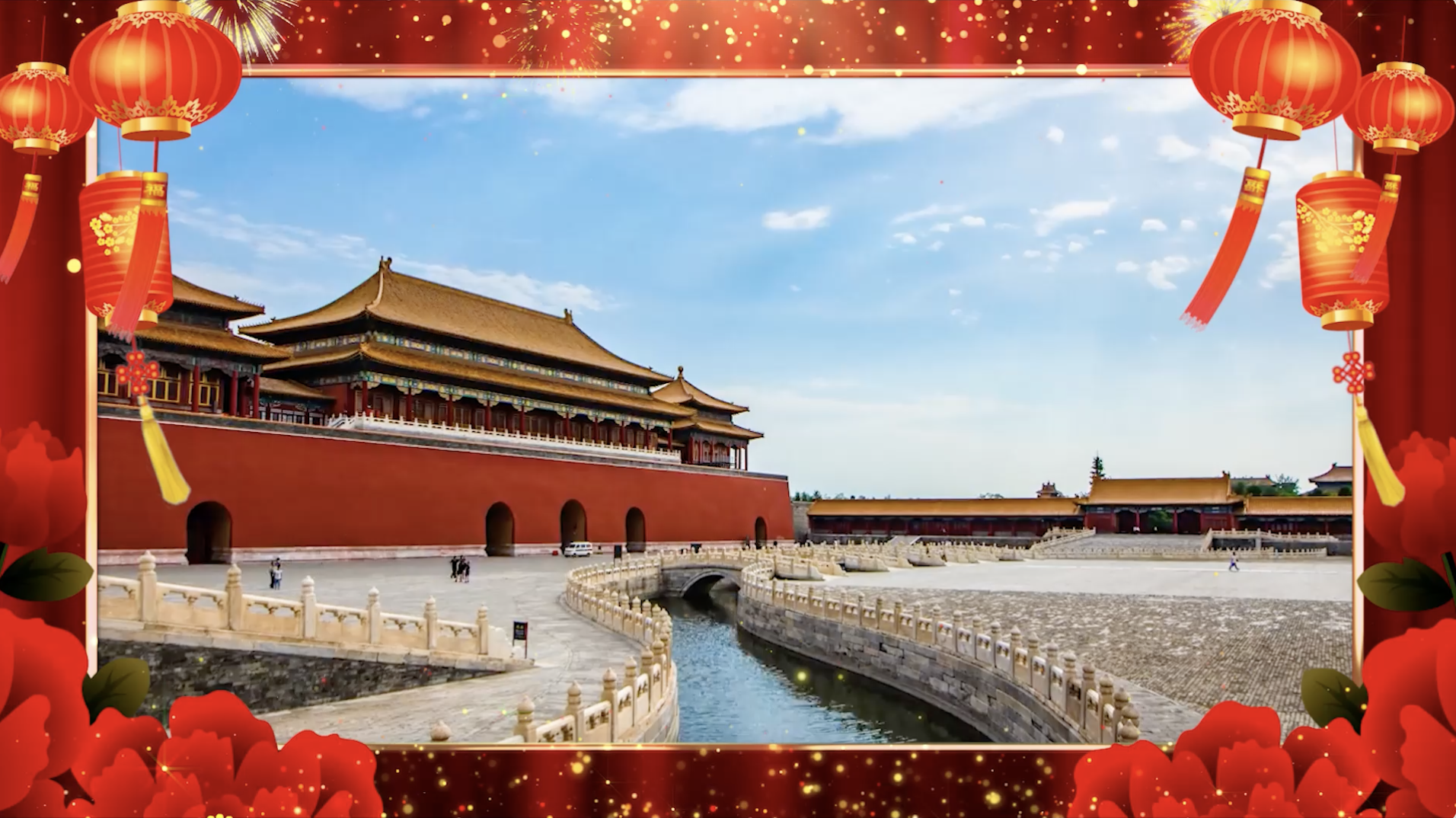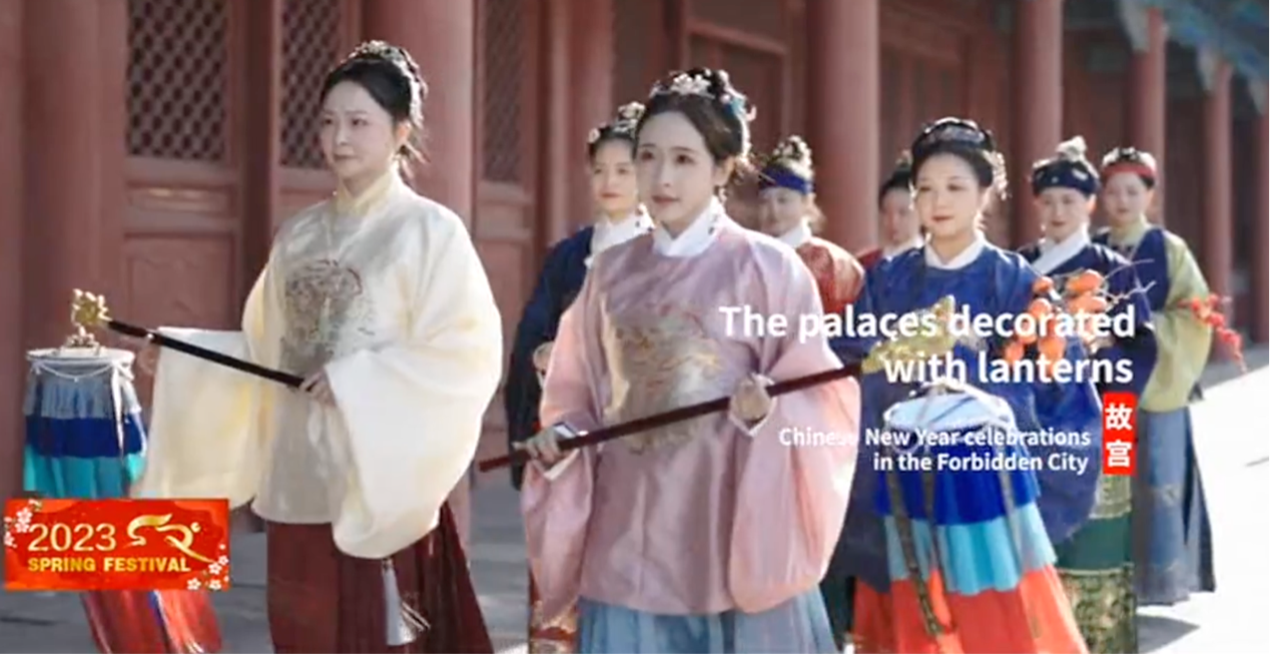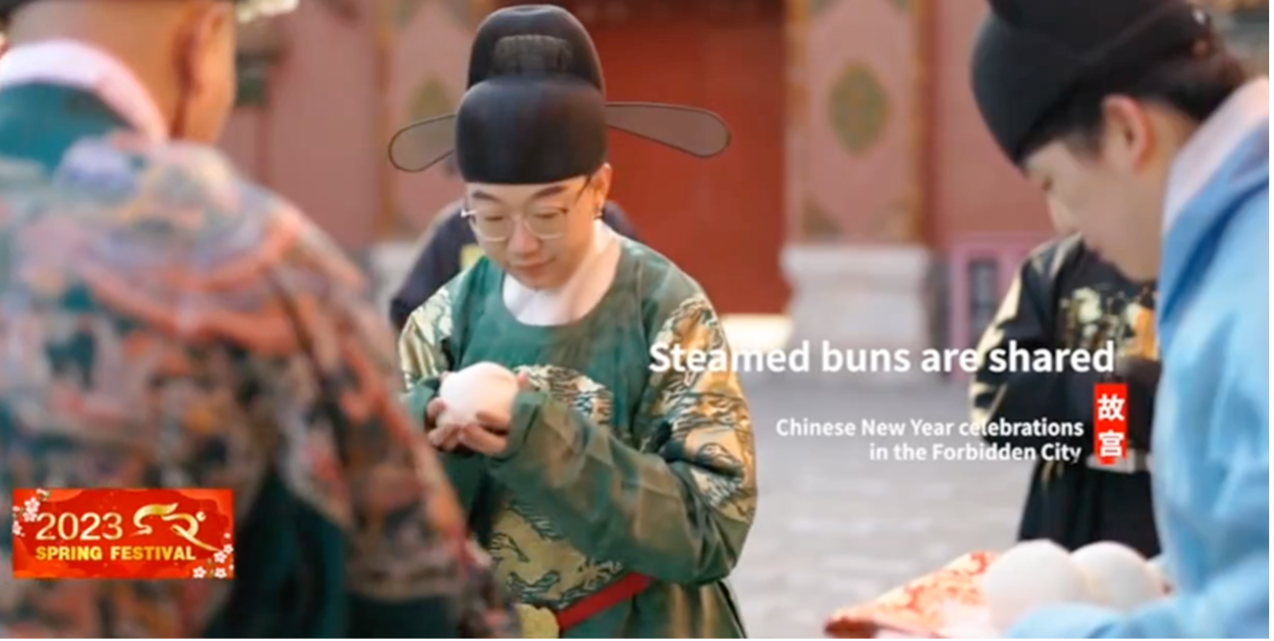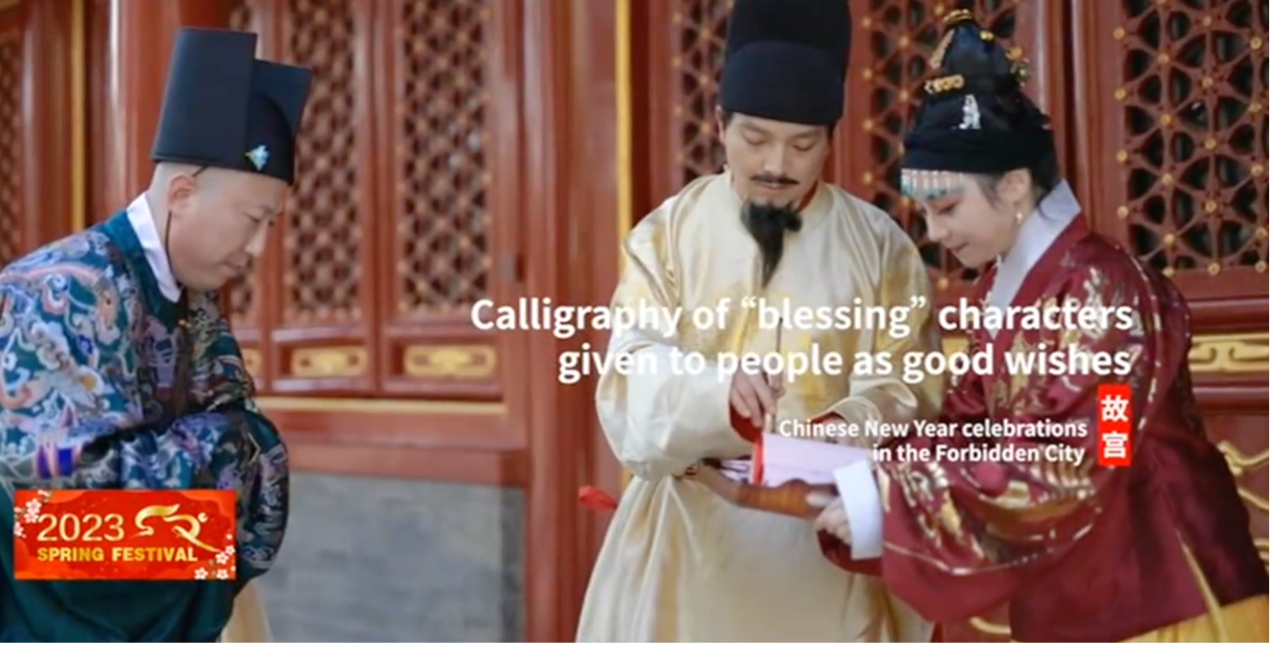04:32

The Spring Festival is here! Many traditional customs for celebrating this occasion are inherited from ancient times. CGTN host Caroline Wu joined a group of young traditional Chinese culture enthusiasts in Beijing at the Palace Museum, or the Forbidden City, to experience what royal families would do for their celebrations. Here come these spectacular New Year's traditions from hundreds of years ago!
The palaces decorated with lanterns

During the Chinese New Year celebrations, palaces are decorated with various lanterns. /CGTN
During the Chinese New Year celebrations, palaces are decorated with various lanterns. /CGTN
During the Chinese New Year celebrations, lanterns with exquisite workmanship adorn the palace halls, adding to the joyful atmosphere in the Forbidden City.
Spring Festival couplets, festival-themed paper cuttings and other decorations are also prepared to express good wishes.

Steamed buns are shared as one of the traditional customs for the Spring Festival. /CGTN
Steamed buns are shared as one of the traditional customs for the Spring Festival. /CGTN
Steamed buns are usually prepared by Chinese families for the Chinese New Year celebration, as "steaming" symbolizes a thriving life in traditional culture. People also share their home-made steamed buns with their relatives and friends.
Calligraphy of "blessing" characters" given to people as good wishes

The imperial calligraphy of "blessing" characters would be gifted to court ministers and officials as good wishes as part of Spring Festival celebrations in ancient times. /CGTN
The imperial calligraphy of "blessing" characters would be gifted to court ministers and officials as good wishes as part of Spring Festival celebrations in ancient times. /CGTN
On the first day of the Spring Festival in ancient times, the emperor would repeatedly draw the Chinese character "Fu" - which means "blessing" - and then hold a ceremony to mark the start of undertakings for the entire year. The imperial calligraphy of "blessing" characters would be gifted to court ministers and officials.
Who will not expect to pay a New Year visit to relatives and friends during the Spring Festival holiday? People will exchange gifts and express good wishes, and they also send their New Year greetings to each other when they meet.
Red envelopes are usually given to children as wishes for happiness. What's being put in these auspicious red envelopes is normally money, which is believed to bring good luck and ward off evil. Hence the name "lucky money."
New Year ceremony to bide farewell to the past year
In ancient times, the imperial court would hold a ceremony on the 1st day of the Spring Festival to pray for a harmonious, happy, prosperous and peaceful New Year.